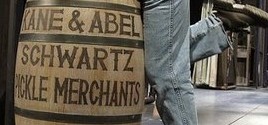The share of homeowners who are refinancing to cash out some of their equity has doubled over the past year as appreciating prices have driven up home values broadly in hundreds of markets across the nation, according to Freddie Mac’s quarterly refinance report.
In the second quarter, an estimated $8.0 billion in net home equity was cashed out during a refinance of conventional prime-credit home mortgages, up from the revised $5.6 billion in the first quarter. Adjusted for inflation, annual cash-out volumes during 2010 through 2013 have been the smallest since 1997.
About 72 percent of those who refinanced their first-lien home mortgage maintained approximately the same loan amount or lowered their principal balance by paying in additional money at the closing table, unchanged from the previous quarter. Twenty-eight percent ‘cashed-out’ some equity, the highest share in five years; the peak on ‘cash-out’ share was 89 percent during the second and third quarters of 2006.
Of borrowers who refinanced during the third quarter of 2014, 36 percent shortened their loan term, a four percent decline from the previous quarter. From 1990 through 2013, on average 28 percent of borrowers shortened their term.
In aggregate, U.S. home equity grew by an estimated $3 trillion during the two-year period through June 30, 2014. Much of this gain was attributable to home value gains, with shorter-term loans and faster-than amortized principal paydowns also being a factor.
The equity rebound is broadly based, according to data from Homes.com. By August, some 459 markets, or more than half (52 percent) of the 883 markets tracked by Homes.com, had achieved full price recovery by reaching or exceeded their peak price levels during the housing boom. As a whole, larger markets are recovering more slowly than smaller ones. Of the top 300 markets, 131, or 43.6 percent have achieved full price recovery compared to 52 percent of all 883 markets tracked by Homes.com. Of the top 100 markets, only 39 have achieved full price recovery.
The median age of the original loan outstanding before refinance was 7.0 years during the third quarter. The median age was 7.0 years or older in each of the last four quarters, the most since the analysis began in 1985.
“While the share of borrowers that cashed-out some equity has increased considerably over the past year, the refinance volume has also fallen sharply, resulting in a relatively small amount of equity cashed-out, to the tune of roughly $8 billion which is less than one-tenth of what we saw at the peak in mid-2006. That said, based on the analysis contained in our third quarter refinance report, we estimate that those that lowered their payment by refinancing into a cheaper mortgage rate will save more than $1.5 billion in interest payments over the next 12 months of their new loan. On average, that’s an interest rate reduction of about 1.3 percentage points — a savings of about 24 percent. On a $200,000 loan, that translates into mortgage interest savings on average of about $2,700 during the next 12 months,” said Frank Nothaft, Freddie Mac vice president and chief economist.
The Freddie Mac estimates come from a sample of properties on which Freddie Mac has funded two successive conventional, first-mortgage loans, and the latest loan is for refinance rather than for purchase. The analysis does not track the use of funds made available from these refinances. The analysis also does not track loans paid off in entirety, with no new loan placed. Some loan products, such as 1-year ARMs and balloons, are based on a small number of transactions.
With the report for the first quarter of 2013, the calculation of the principal balance at payoff of the previous loan has been modified. Previously, the payoff balance was calculated as the amount due based on the loan’s amortization schedule, and “cash-in” was defined as a new loan amount that was less than the scheduled amortization amount. Data for 1994 to current have been recalculated using the actual payoff amount of the old loan, with an allowance for rounding down the principal at refinance; thus, from 1994 to present, “cash-in” is defined as a new loan amount that is at least $1,000 less than the payoff principal balance of the old loan. Data are presented under both methods for 1994 for comparison purposes.
 RealEstateEconomyWatch.com Insight and Intelligence on Residential Real Estate
RealEstateEconomyWatch.com Insight and Intelligence on Residential Real Estate



One comment
Pingback: With Equity Rising, More Homeowners Cash Out | Belair Realty